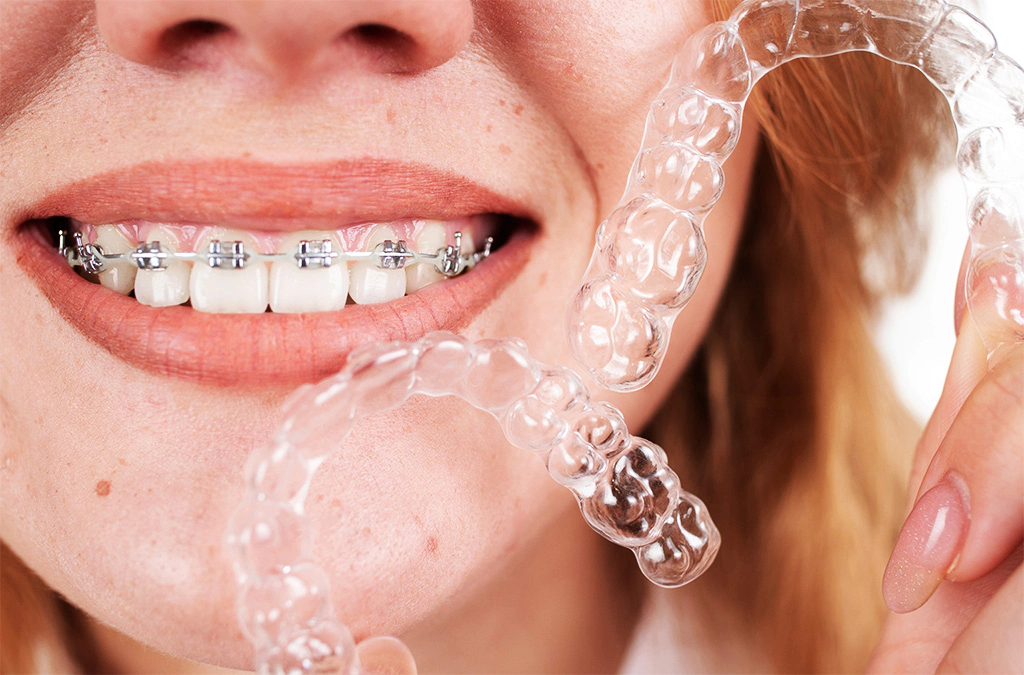A beautiful, straight smile is more than just a cosmetic goal; it’s a path to better oral health, confidence, and overall well-being. If you’re considering cosmetic treatment at private dentists caernarfon, you’re likely weighing your options between Invisalign and traditional braces. Both methods effectively straighten teeth, but they have distinct differences that might make one a better choice for you than the other. Let’s dive into the pros and cons of each to help you make an informed decision.
Table of Contents
Invisalign: The Clear Aligners Revolution
Invisalign has transformed the orthodontic world by offering a discreet and flexible way to straighten teeth. Using a series of clear, custom-made aligners, Invisalign gradually moves your teeth into their desired positions without the need for metal brackets or wires.
Pros of Invisalign:
- Virtually Invisible: One of the main appeals of Invisalign is that the aligners are nearly invisible, making them an excellent choice for adults and teens who want a more discreet way to straighten their teeth.
- Removable: Invisalign aligners are removable, allowing you to eat, drink, brush, and floss with ease. This feature helps maintain better oral hygiene compared to traditional braces.
- Comfortable: Made from smooth plastic, Invisalign aligners are generally more comfortable than metal braces, with no sharp edges or wires to irritate your mouth.
- Fewer Dental Visits: Invisalign often requires fewer orthodontic appointments since there are no wires to tighten. You typically switch to a new set of aligners every one to two weeks.
- Customised Treatment Plan: Invisalign uses advanced 3D imaging technology to create a detailed plan of how your teeth will move throughout treatment, giving you a preview of your final results before you even begin.
Cons of Invisalign:
- Requires Discipline: Because Invisalign aligners are removable, they rely on the wearer’s discipline. For effective results, aligners must be worn for 20-22 hours per day, which can be challenging for some.
- Not Ideal for Severe Cases: Invisalign is best suited for mild to moderate orthodontic issues. Complex cases involving severe misalignment or jaw corrections may still require traditional braces.
- Higher Cost: Invisalign can be more expensive than traditional braces, depending on the complexity of the case and the treatment length.
Traditional Braces: The Tried-and-True Method
Traditional braces have been used for decades to correct a wide range of orthodontic issues. They consist of metal brackets glued to the teeth and connected by wires that are periodically tightened to move the teeth into place.
Pros of Traditional Braces:
- Effective for Complex Issues: Braces are highly effective for treating severe misalignments, overcrowding, large gaps, and other complex orthodontic issues that Invisalign may not address.
- No Discipline Required: Once braces are on, they’re on—meaning there’s no temptation to remove them. This makes them ideal for patients (especially kids and teens) who might struggle with the self-discipline needed for Invisalign.
- Customisable Options: Today’s braces aren’t just limited to metal; there are options like ceramic braces, which are less visible, and lingual braces, which are placed on the inside of the teeth.
- Consistent Results: Braces work continuously, providing consistent pressure on the teeth, which can sometimes achieve faster results for complex cases.
Cons of Traditional Braces:
- Visibility: Traditional metal braces are noticeable, which can be a concern for those who want a more discreet treatment.
- Oral Hygiene Challenges: Brushing and flossing can be more difficult with braces, as food particles can get trapped in the brackets and wires, leading to potential oral hygiene issues.
- Diet Restrictions: Patients with braces must avoid certain foods, such as hard, sticky, or chewy items that could damage the brackets or wires.
- Discomfort: Braces can cause some discomfort, especially after adjustments. The metal components can occasionally irritate the inside of the mouth.
Which Is Right for You?
Choosing between Invisalign and traditional braces comes down to personal preference, lifestyle, and the complexity of your orthodontic needs. Here are some considerations to help guide your decision:
- Aesthetic Concerns: If the appearance of your orthodontic treatment is a top priority, Invisalign offers a clear advantage with its virtually invisible aligners.
- Complexity of Your Case: If you have severe alignment issues, traditional braces may be the more effective option.
- Lifestyle and Discipline: Consider how well you can stick to wearing aligners for the required 20-22 hours a day. If you think you might be tempted to remove them frequently, traditional braces might be a better fit.
- Budget: Invisalign can be more costly, especially for longer treatment times. Be sure to discuss all financial aspects with your orthodontist to find an option that works within your budget.
Final Thoughts
Both Invisalign and traditional braces offer reliable paths to a straighter, healthier smile. The best choice depends on your specific needs, lifestyle, and treatment goals. Consulting with an orthodontist will provide personalised guidance, ensuring you choose the best approach for your journey to a perfect smile.

